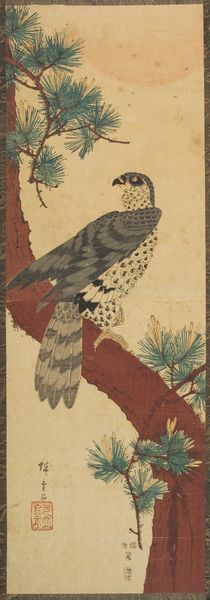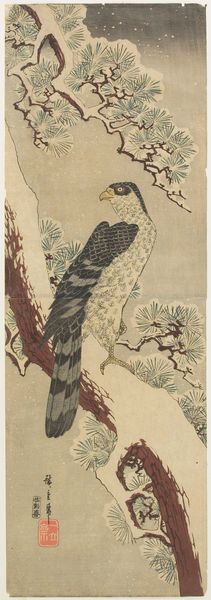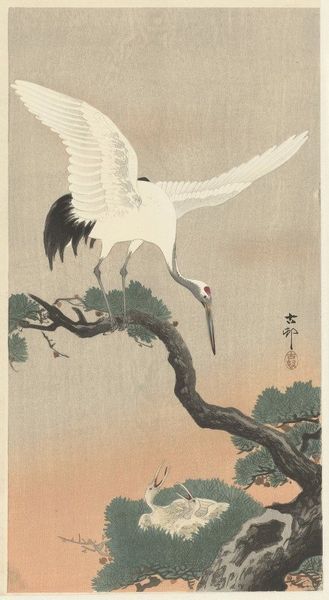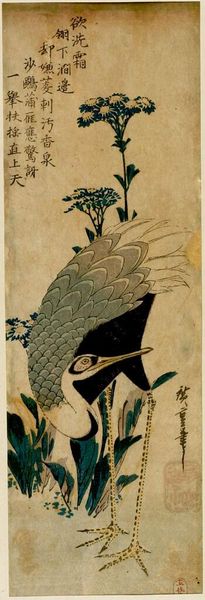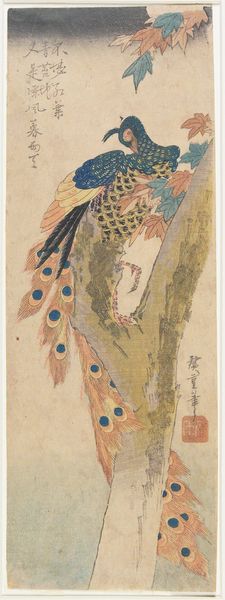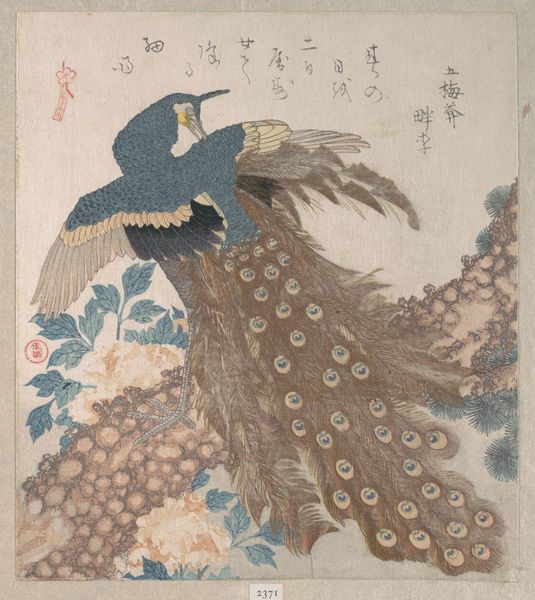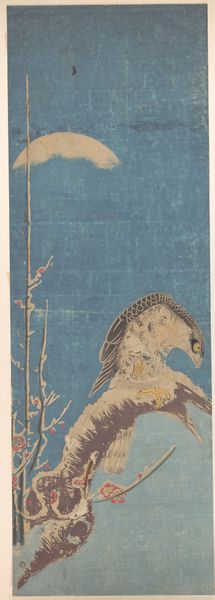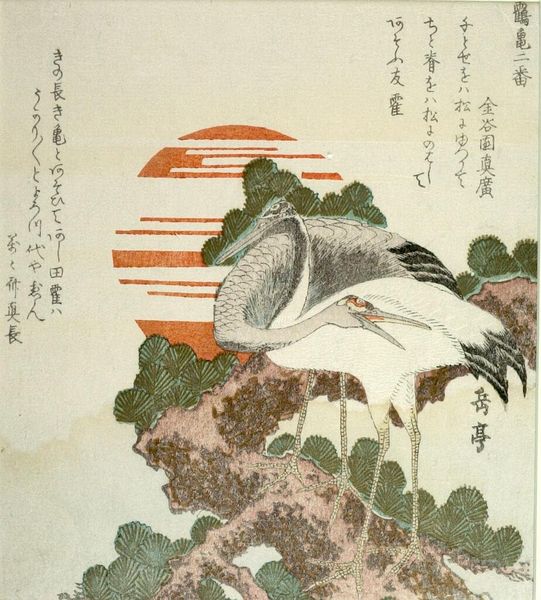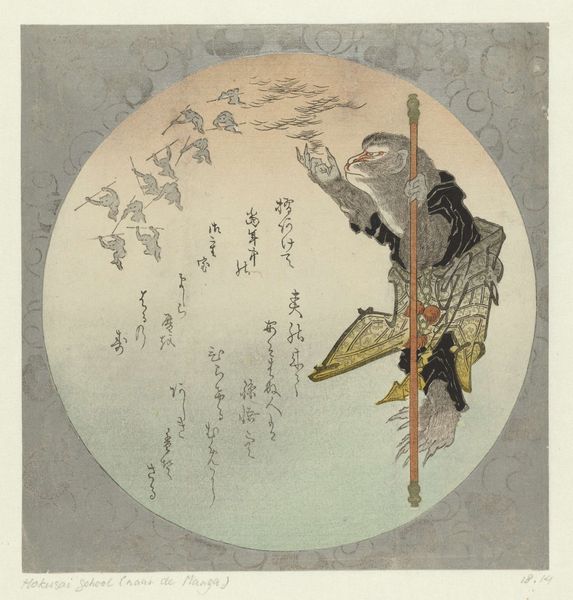
print, ink, woodblock-print
# print
#
asian-art
#
landscape
#
ukiyo-e
#
figuration
#
ink
#
woodblock-print
#
orientalism
#
line
Dimensions: 28 × 9 3/8 in. (71.1 × 23.8 cm) (kakemono-e)
Copyright: Public Domain
Curator: This is Utagawa Hiroshige’s "Crane," a woodblock print created around 1851, here at the Minneapolis Institute of Art. Editor: It's so striking. The contrast between the deep reds and blues of the pine boughs against the muted background feels both peaceful and somehow precarious, especially with the crane perched so high. Curator: That sense of balance is key to understanding the socio-political context. Hiroshige worked during a time of immense social and political change in Japan, and images of nature often functioned as symbolic commentaries on the anxieties and aspirations of the population. Consider how the crane, often symbolizing longevity and good fortune, finds itself on this rather rough, perhaps unstable branch. Editor: So the crane becomes this cultural carrier? The image feels very familiar; the crane immediately triggers a network of associations. In Japanese culture, it represents not only long life but marital fidelity and happiness. It's a potent symbol of hope, isn't it? It is a wish for the future despite an uncertain or destabilizing reality? Curator: Precisely. In that historical moment, and in dialogue with modern, contemporary experience, that sense of hopeful resilience—the graceful crane navigating turbulent times—becomes exceptionally poignant. I think it encourages us to examine representations of femininity and class within depictions of the natural world. How do societal structures impact representations of grace, or even luck? Editor: Right, and look at the simplified lines and blocks of color. Hiroshige is distilling the essence of these symbols – crane, pine, even the rising sun, I presume – to its most emotionally resonant form. The fact that it is a print also hints at wider dissemination of such beliefs, anxieties, and longings. Curator: A powerful way to consider art as social mirror reflecting shared experiences, longings, and a will toward cultural perseverance, while the iconic vocabulary is deployed to encode shared values. It really challenges viewers to critically assess both aesthetic beauty and embedded social critique. Editor: This print, a seeming image of graceful repose, unfolds into a surprisingly layered experience. Curator: It certainly does, offering a lens through which we can better comprehend our present realities by looking toward the complexities of the past.
Comments
No comments
Be the first to comment and join the conversation on the ultimate creative platform.
